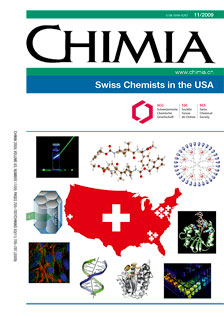Structure-Specific Endonucleases in DNA Repair
DOI:
https://doi.org/10.2533/chimia.2009.753Keywords:
Anti-tumor therapy, Cancer, Dna damage, Dna repair, EndonucleasesAbstract
Nucleotide excision repair (NER) is an essential DNA repair pathway that addresses a variety of DNA lesions formed by UV light, environmental mutagens and agents used in cancer chemotherapy. NER involves the concerted action of over 30 proteins and operates by the sequential assembly of the involved factors at sites of damage. NER culminates in the removal of an oligonucleotide containing the damage by two incision reactions 5' to the lesion by ERCC1-XPF and 3' to the lesion by XPG. ERCC1-XPF and XPG are structure-specific endonucleases, a large class of enzymes involved in a variety of DNA repair, recombination and replication pathways. This review focuses on some of our recent work on how the activities of the ERCC1-XPF and XPG proteins are regulated to incise DNA only at defined times during the NER pathway, thereby preventing the formation of unwanted and cytotoxic DNA breaks by random incision of DNA. The implications of this work for our understanding of endonuclease enzymology, carcinogenesis and anti-tumor therapy are discussed.Downloads
Published
2009-11-27
Issue
Section
Scientific Articles
License
Copyright (c) 2009 Swiss Chemical Society

This work is licensed under a Creative Commons Attribution-NonCommercial 4.0 International License.
How to Cite
[1]
Chimia 2009, 63, 753, DOI: 10.2533/chimia.2009.753.







